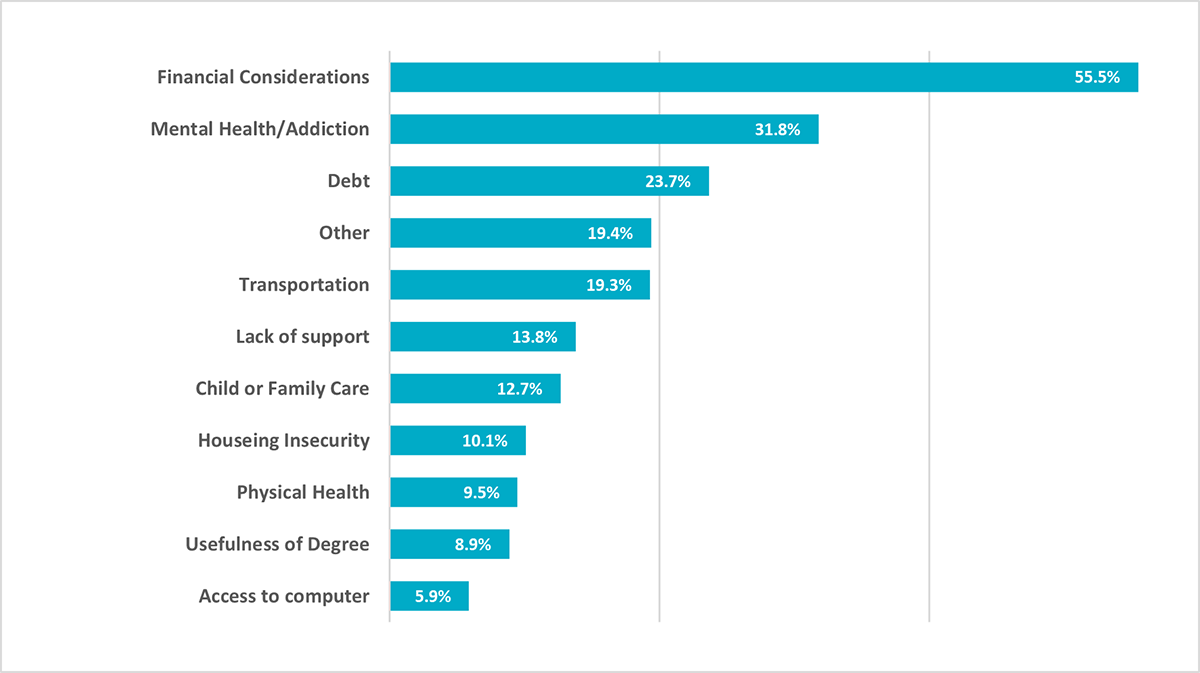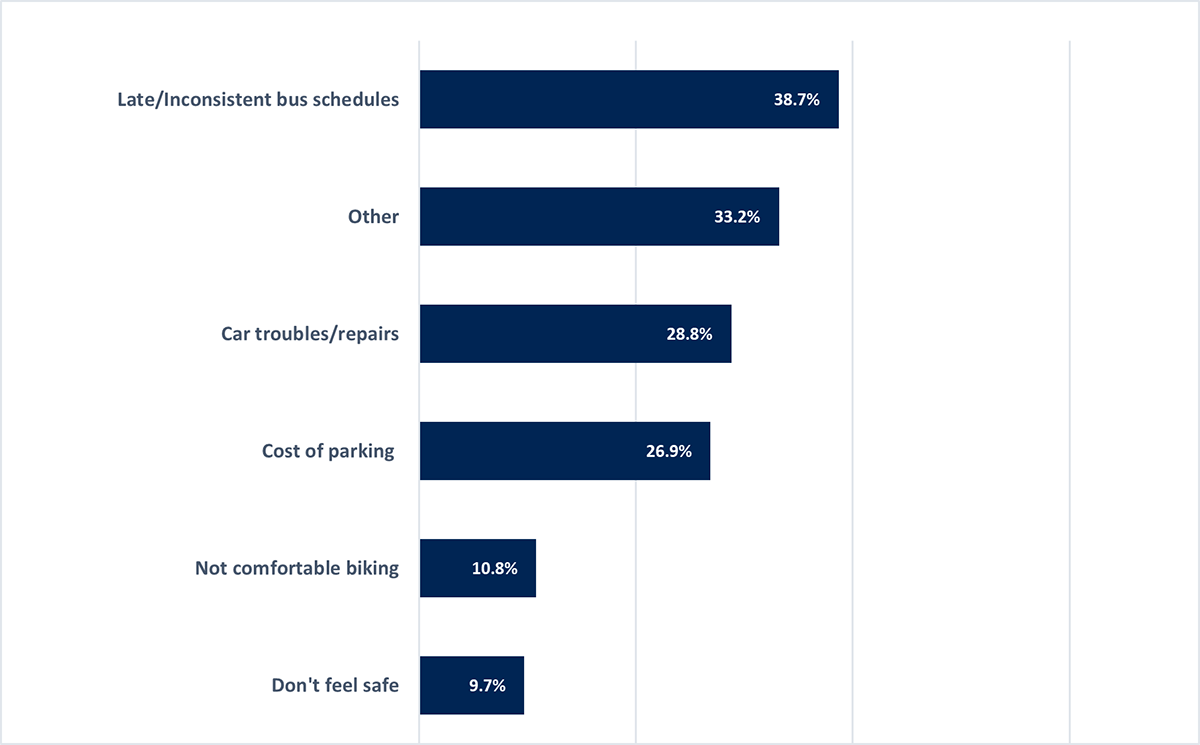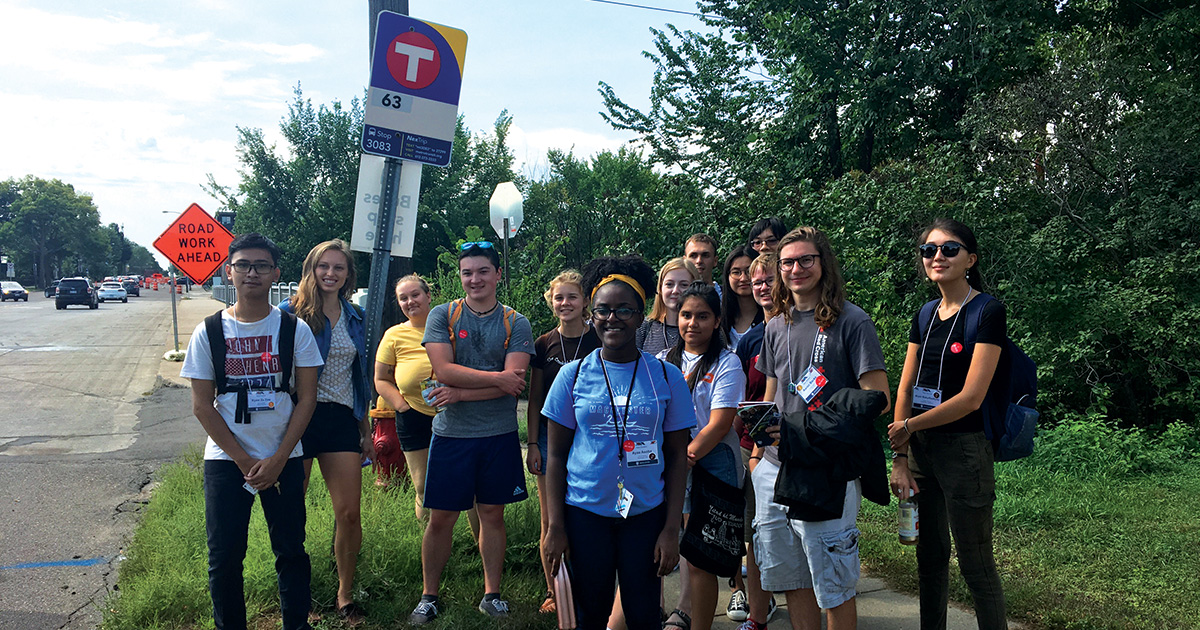How Ignoring Public Transit Sets Students Up to Fail—And What to Do About It
Over the past year, the COVID-19 pandemic illustrated many long-standing inequities that students of color, low-income students, and students with disabilities faced in terms of internet access, necessary educational support, and having space to focus and complete schoolwork. As students in our communities prepare to return to school this fall, our decision-makers have an obligation to address barriers to education—and being able to get to school affordably, quickly, and reliably is indeed one of them.
Research has shown that community college students, even those that receive or qualify for free tuition programs, still face immense challenges in their lives that impact their academic careers. Access to transportation is one of those key challenges, especially for community college students who almost exclusively commute to school since there is typically no on-campus housing. For these students, access to affordable and reliable transportation is a critical component to success. If we are to build a Minnesota where everyone has access to a quality education, better bus service needs to be a core part of that plan.
Without Good Transit Service, Students Struggle to Graduate
In 2019, Move Minnesota received a grant to work with local colleges to create changes on campus that encourage sustainable transportation like biking, walking, and rolling. We worked with a few 4-year colleges including: Augsburg, St. Thomas, and Macalester College. We also worked with Minneapolis College. Minneapolis College is a 2-year community and technical college. Minneapolis College is also one of the most diverse colleges in Minnesota, with its student population made up of over 70 percent underrepresented students (first-generation, students of color, and/or low-income students). Minneapolis College also has a graduation rate of 16 percent compared to the University of Minnesota Twin Cities, which has an 80 percent graduation rate.
Given the differences at Minneapolis College, Move Minnesota and the Minneapolis College administration knew we had to take a different approach to our work that honored the lived experiences of the student body, many of whom are non-traditional students. We took a holistic approach to developing surveys and focus groups to better understand transportation and other life barriers that were inhibiting students from completing their degrees.
What we discovered in our time with Minneapolis College students was that transportation was one of the top five biggest barriers to graduation. Nearly 53 percent of students said the barriers listed below caused them to miss class two or more times. Class attendance is routinely cited as a predictor of grades. In other words, if someone misses two or more classes—because they just barely miss the bus and it’s a long wait for the next one—their chance of passing that class goes way down.


Late and inconsistent bus schedules was the top transportation-specific barrier. As one student said, “Not having a way to get to school. Because of lack of money or someone to watch my daughter. I have to miss class.” Another student said, “I don’t always have food and bus money.” Transit barriers were inextricably connected to other barriers like housing, food access, employment, and childcare—reminding us that importance of an intersectional approach when it comes to building connected communities.
The barriers expressed by Minneapolis College students are not unique. For example, one study from Detroit researching students in tuition-free programs reported that almost all the community college students surveyed cited being a working student, housing, food security, and access to transportation as obstacles impeding their ability to graduate. Across the country, New York’s CUNY school system rolled out a program called ASAP with the goal of hitting at least a 50 percent graduation rate for community college-students; combined with other initiatives to eliminate barriers to degree completion, CUNY provided ASAP participants with unlimited free metro cards. The program was incredibly successful raising graduation rate to 53 percent, three times higher than the national average.
While transit and access to transportation options alone does not fix educational or societal inequities, like housing and food access, it is a foundational component that is necessary for students, especially community college students, to achieve success. Failing to prioritize fast and connected transit service fails our students who need the most support.
To Boost Student Achievement, Boost the Bus
These are pervasive and systemic issues that require immediate action. Instead of letting another semester go by with students struggling to get to class, local decision-makers have the power to make a difference before students even return to campus in the fall. Here in the Twin Cities, our county and city officials can start right now by speeding up the entire transit network with dedicated bus lanes and signal priority on Metro Transit’s most-used routes. This solution is quick, effective, and inexpensive. It boils down to caring enough to do it because the costs to implement these improvements are so low.
Taking a system-wide approach is essential. Because setting students up for success isn’t just about access to campus. Community college students need better transit to get to class—they also need better transit to get to work, get groceries, and access childcare. One good corridor doesn’t solve that on its own. Making transit really work for people means ensuring the service is fast, frequent, and reliable in all areas of our lives.
Are you a student interested in helping to make our Minnesota transit system more equitable? Get involved! Reach out at finnm@movemn.org to volunteer or share your story here.

